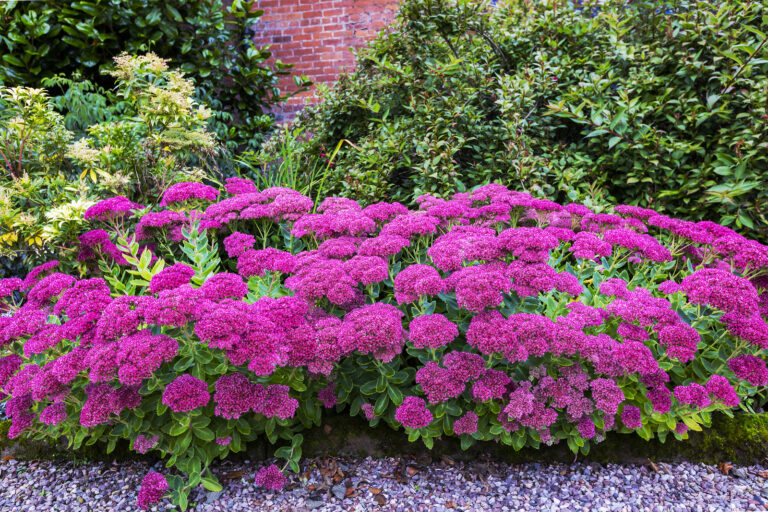The Master Interplanting & Relay Cropping Guide for Major Vegetables
Interplanting and relay cropping allow your garden to produce more food in less space—without sacrificing soil health or increasing labor. By pairing crops that complement each other above and below ground, and by planting one crop before the previous crop finishes, you keep the soil covered, the roots alive, and your garden photosynthesizing every single day.
This post introduces the principles behind the Master Interplanting & Relay Cropping Chart for Major Vegetables—a complete reference for deciding what to plant together, which crops can follow each other immediately, and how to use timing and root architecture to your advantage. Whether you’re gardening in raised beds or in-ground beds, these strategies help you use space efficiently while supporting beneficial insects, reducing weed pressure, and building resilient soil over time.
Why Interplanting and Relay Cropping Work
1. They Keep the Soil Covered and Alive
Empty spaces invite weeds and cause soil biology—especially mycorrhizal fungi—to starve. Interplanting and relay cropping ensure living roots remain in the ground. As one crop matures, another is already in place to take over.
2. They Maximize Vertical and Root-Zone Space
Crops occupy different layers of the garden:
- Tall crops create shade for tender greens.
- Deep-rooted crops share space well with shallow-rooted ones.
- Fast growers fill gaps before slower crops take off.
This creates a three-dimensional use of space.
3. They Increase Biodiversity and Reduce Pests
Many pests become less destructive when you diversify plantings. For example:
- Onions repel aphids near carrots.
- Marigolds and calendula attract hoverflies that prey on soft-bodied pests.
- Basil improves tomato growth while drawing in pollinators.
4. They Improve Productivity
With relay cropping, you eliminate the waiting period between crops. Instead of a bed sitting idle, you harvest one crop while its successor is already established.
How to Use the Master Chart Effectively
Step 1 — Identify the Anchor Crop
Choose the crop that will take the bed for the longest time (e.g., tomatoes, corn, winter squash). Everything else is planned around that crop.
Step 2 — Select Compatible Understory or Edge Plants
Choose crops that:
- Grow quickly
- Stay small
- Tolerate partial shade
- Have shallow or noncompetitive root systems
Examples: lettuce, radishes, cilantro, green onions, beets.
Step 3 — Plan the Relay Timing
Ask:
- When does the first crop slow down or reach half maturity?
- Can transplants be inserted between rows 2–4 weeks before harvest?
- Can seeds be sown into the maturing crop 3–6 weeks before harvest?
This creates a zero-gap transition.
Step 4 — Consider Root Compatibility
Use combinations that naturally avoid competition:
- Shallow + Deep
- Fibrous-rooted + Taprooted
- Single-taproot + Clover-like spreader
This is included for every vegetable in the chart.
Step 5 — Keep the Soil Disturbance Minimal
Cut finished crops at the base rather than pulling them. Leaving roots in place protects the soil web and gives incoming crops an immediate advantage.
Benefits You’ll Notice Almost Immediately
Better Soil Structure
Multiple root forms—taproots, fibrous roots, laterals—create channels for water, oxygen, and beneficial organisms.
Fewer Weeds
Dense plantings naturally suppress weeds without synthetic herbicides or plastic.
Higher Yields per Square Foot
Gardeners often double their production by layering crops above, below, and between each other.
Healthier Plants from Diversity
Interplanted beds have greater stability and fewer pest outbreaks.
Less Water Needed
Shaded soils stay cooler and lose less moisture.
Putting the Chart Into Practice: A Simple Example
Let’s say you are growing tomatoes. Using the chart, you might:
- Interplant young lettuce, arugula, basil, or green onions at transplanting.
- Add beets or parsley 3–4 weeks later.
- Relay plant fall carrots or cilantro into the tomato bed in late summer.
- Remove tomatoes by cutting them at the base; let the fall crop take over immediately.
This keeps the bed productive for 9–11 months without a break.
Using the Chart
The Master Interplanting & Relay Cropping Chart is meant to be a long-term planning tool—one that helps you think about your garden as a living, year-round ecosystem rather than a sequence of isolated crops. Interplanting and relay cropping make gardening more abundant, more ecological, and more efficient. With practice, these techniques become second nature, and you’ll begin to see the garden not as a collection of separate beds—but as a dynamic, always-growing landscape.
Legend
- Best Interplanting Partners = crops you can grow side-by-side
- Relay / Succession Options = crops you can sow or transplant into the standing crop
- Notes = root depth, mycorrhizal status, understory/tall crop relationships
Full Chart
| Crop | Best Interplanting Partners | Relay / Successions | Special Notes |
|---|---|---|---|
| Arugula | Tomatoes, sunflowers, peas, corn | First crop before warm-season vegetables | Excellent understory; cut at soil level |
| Basil | Tomatoes, peppers, corn | Relay with lettuce, beets | Great insectary; boosts tomato growth |
| Beans (Bush/Pole) | Brassicas, tomatoes, corn, squash | Transplant beans into maturing carrots | Pole beans climb corn; fix nitrogen |
| Beets | Green onions, carrots, parsley, nightshades | Relay with summer squash | Non-mycorrhizal; likes onion family |
| Broccoli | Lettuce, green onions, parsley, cilantro | Overseed with parsley/cilantro | Non-mycorrhizal; thrives with fast mycorrhizal understories |
| Cabbage | Lettuce, green onions, nasturtiums (interplants that make mycorrhizal associations) | Follow with rooted crops | Nasturtiums attract parasitoids; use cilantro as ground cover below cabbage in fall |
| Carrots | Onions, lettuce, beets; interplant only with mature crops ready for harvest | Relay ahead of squash, beans, lettuce | Sow second crops into maturing canopy; carrots do not thrive in competition with weeds |
| Cauliflower | Lettuce, onions, parsley, cilantro (interplants that make mycorrhizal associations) | Relay with fall herbs – cilantro and parsley | Nasturiums or any flowering insect attractants increase presence of parasitoids |
| Celery | Leeks, onions, spring radishes, lettuce, beets, parsley, cilantro | Relay with lettuce and radishes | Prefers cool understories; shallow-rooted |
| Corn | Beans, other leguemes, squash, basil, melons | Relay with pumpkins or pole beans | Tall crop; great for shade-loving understories such as lettuce and arugula |
| Cucumbers | Corn, sunflowers, radishes, beets, lettuce | Relay after radishes or spinach | Likes partial shade; pair with tall trellises; green garlic can have beneficial effects |
| Eggplant | Basil, beans, spinach as groundcover; allyssum, marigolds deter pests | Relay with lettuce, arugula, green onions, beets | Likes warm soil; mycorrhizal; avoid competition first two months |
| Fava Beans | Brassicas, leafy greensd; prefers no competition in first 30 days after emergence | Relay after fall carrots; follow with potatoes, celery, parsley, parsnips, green onions | Fixes nitrogen; cool-season crop |
| Fennel | Dill, coriander, alyssum | Do NOT relay into fennel | Allelopathic—plant at edges only |
| Garlic | Lettuce, beets, carrots, cucumbers; bulbs may not size up next to competition | Relay with summer greens, strawberries | Strong pest suppressant; shallow-rooted; plant beneath broccoli, cauliflower |
| Ginger | Basil, turmeric, lettuce, beets | Relay with greens, spring radishes | Loves dappled shade; grows well under taller crops |
| Kale | Lettuce, onions, herbs (interplants that make mycorrhizal associations) | Relay with cilantro, parsley, or arugula | Non-mycorrhizal; long-lived |
| Leeks | Carrots, celery, beets, lettuce | Follow spring radishes; relay into onions or fall crops | Thin root profile allows tight spacing |
| Lettuce | Brassicas, carrots, tomatoes, peppers, eggplant, fennel, leeks, celery, radishes, green onions, okra, annual herbs, cucumbers | Relay everywhere—ideal placeholder crop | Best early-season interplant |
| Bulb Onions | Carrots, beets, lettuce; next to no competition for sizable bulbs; space well | Relay with short-term greens | Compete poorly—use slow companions |
| Green Onions | Beets, carrots, dill, basil, nightshades, brassicas such as broccoli and cauliflower | Relay into empty gaps | Non-mycorrhizal; easy space filler; good pest deterrent |
| Parsnips | Onions, lettuce, radishes | Relay after radish canopy | Deep-rooted; aerates soil; sow in late winter for fall harvest |
| Peas | Lettuce, radishes, carrots | Relay with cucumbers or beans | Cool-season; nitrogen fixer; gets along with most crops |
| Peppers | Basil, onions, carrots, lettuce, green onions, beets, turnips, arugula; keep competition free for first 5 to 10 weeks | Relay with cilantro or radishes | Prefers light understory shade |
| Potatoes | Beans, corn, lettuce, beets, radishe, turnips, green onions, cilantro; prefer no competition for first 60 days | Relay early potatoes with beans, squash | Deep-rooted; leaves soft soil for next crop |
| Radishes | Lettuce, carrots, peas, brassicas; avoid dense plantings or greens will surpass roots | Relay into squash, cucumbers | Fastest gap filler; great opener crop |
| Spinach | Brassicas, radishes, peas; note spinach is a poor competitor — give own row | Relay into cucumbers, beans, green onions, or lettue | Cool-season; good living mulch; does not make mycorrhizal associations |
| Summer Squash | Beans, lettuce | Relay with green onions, potatoes, radishes, turnips, beets or carrots | Large canopy suppresses weeds |
| Winter Squash | Corn, beans, sunflowers; undersow with gren onions, parsley, carrots to help feed soil | Relay after garlic or onions | Sprawling; perfect for late-season |
| Sweet Potatoes | Corn, beans, okra, cowpeas | Relay after lettuce or spinach | Excellent living mulch; spreads |
| Tomatoes | Basil, lettuce, green onions, carrots, beets, bush beans, arugula | Relay with cilantro or radishes | Mycorrhizal; tall crop for understories; pairs well with borage, sweet alyssum nasturtium, marigolds |
| Turnips | Lettuce, peas, onions (interplants that make mycorrhizal associations) | Relay before beans or corn | Quick crop; good soil opener; sow with fall cover crops |
| Daisy-Family Flowers (Marigold, Zinnia, Calendula, Cosmos) | Most vegetables—especially nightshades, squash, beans | Relay with late greens | Excellent insectaries; attract predators & pollinators |




